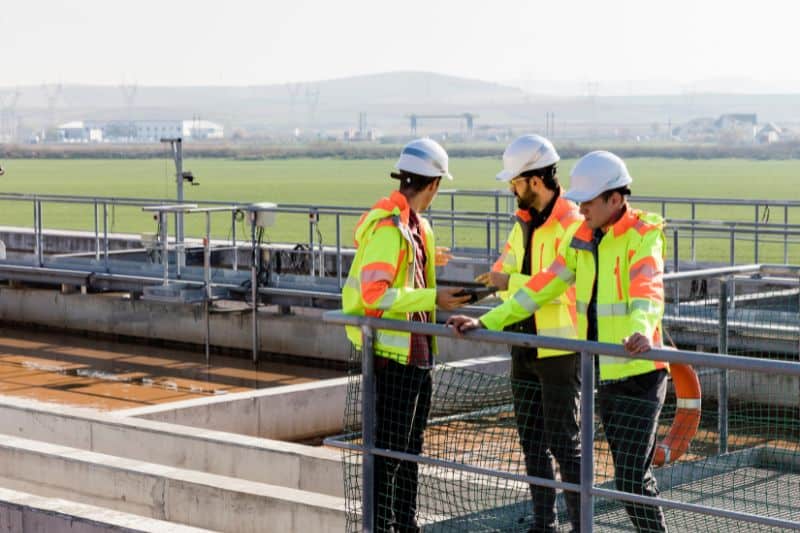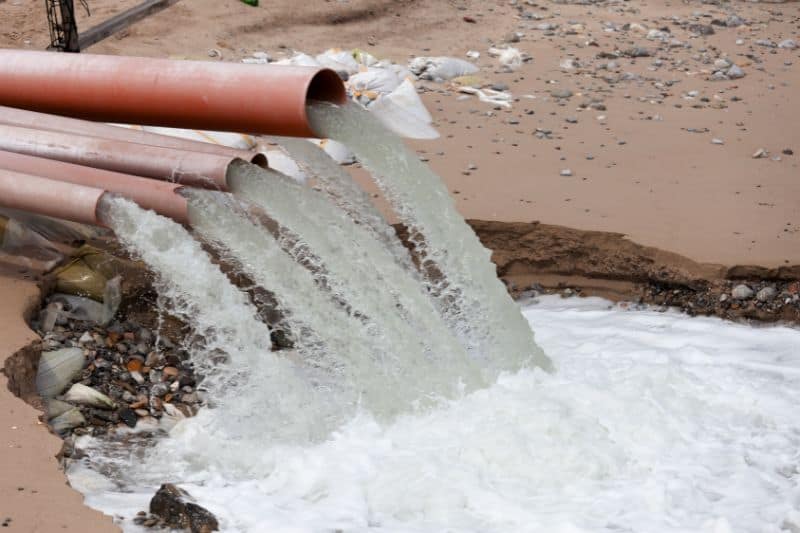Sewage water is wastewater from people living in a community. It is the water released from households after it has been used for various purposes like washing dishes, laundry, flushing the toilet, and other like purposes, thus the name wastewater.
The used water, or wastewater, leaves the houses through pipes installed during plumbing. It then moves into sewers, either constructed by the house owner or into a sewer facility set up by the municipality.
Now, sewage can be grouped into two;
- Grey water
- Black water
Grey water is basically the wastewater from washing. It could be either from bathing, dishes, or laundry.
Black water, on the other hand, is the wastewater that comes from the toilets. It is characterized by debris such as paper wrappings, sanitary products, soap residues, and dirt due to the chemical composition of the various waste materials.
Now, the issue at hand is the consequence of overpopulation in urban areas without adequate planning, leading to sewage pollution. This pollution poses a significant risk not only to the environment but also to human health.
Furthermore, it impacts biodiversity, aquatic life, and agriculture and significantly contributes to eutrophication, along with an increase in Biological Oxygen Demand (BOD)
Causes of Sewage Water Pollution
Let’s take a closer look at the causes of sewage water pollution.

1. The Use of Toilets as Bins
Toilets are designated as fixtures for relieving nature calls. Sadly, careless people have turned toilets into deposit banks for waste materials such as papers and sanitary products, and some even go to the extent of flushing plastics.
These discarded items often lead to blockages in sewage systems within buildings, resulting in toilet overflows served by the same sewer lines. Moreover, these waste materials subsequently clog sewer lines further downstream.
For instance, plastics, including soap wrappers, obstruct rivers and impede the flow of water due to stagnation. This stagnant water becomes a breeding ground for harmful organisms and bacteria.
Additionally, these blockages give rise to air pollution due to the spread of foul odors emanating from the sewage.
In general, sewage treatment plants encounter significant challenges due to these blockages and the presence of foreign substances in the wastewater, ultimately leading to sewage pollution.
2. Cooking Fats
Kitchen products have a lot of fats and oil, and sometimes, the grease can come from greasy dishes being washed in kitchen sinks.
These materials are very fast at accumulating on the interior walls of the pipes, forming coverings that reduce the diameter of the pipe system used for draining wastewater into the sewer.
Continued disposal of fats, oil, and grease in sinks subsequently leads to complete blockage of the sewage system. This is even more hazardous than the blockage caused by toilets.
At this blockage stage, no amount of cleaning can lead to the removal of the layered cover. This will warrant the new installation of a pipe system, which is cost-bearing.
Also, this leads to flooding of houses as well as pollution caused by lousy sewage odors. When the pressure of wastewater is high in a pipe that is clogged with fats, the apparent result is the bursting of pipes, which can lead to a messy situation in houses.
3. Overcapacity of Wastewater

Sewer systems are designed to handle specific volumes of wastewater. However, there are various factors that can lead to sewer overflows.
One common issue is when contractors, during the construction of new buildings, mistakenly connect the sewage system of the new structure to an existing sewer meant for another residential building.
This leads to overflowing of the sewer, which is hazardous to human health and can cause acute viral, bacterial, and parasitic diseases like giardiasis, typhoid, gastroenteritis, and Hepatitis A.
4. Flooding
Flooding is also another factor that increases wastewater. When there is excessive rain, as the water seeks a pathway, it seeps into sewers and mixes with the wastewater, leading to more wastewater in the sewer.
If the volume of the sewer is small, chances are that the sewer system will be unable to hold the increasing volume of water, thereby causing sewer pollution.
5. Improper Handling of Wastewater
This practice is commonly done by industries. Industries use a lot of water and, for this reason, release most of it as wastewater. As it is expected, the industries should treat the same water and bring it back into the industry machinery for reuse.
However, most industries operating in areas with lax environmental policies release this raw sewage into the waterways without the slightest bit of treatment.
When this happens, the people living downstream suffer the most from the effects of sewage pollution. It even leads to the subsequent death of aquatic life due to the release of harmful toxins that interfere with the normal activities of sea life.
6. Root Infiltration
Tree roots can be a cause of pollution of wastewater. They enter sewer lines at specific points and crack the pipes or underground sewer tanks, leading to the seeping of filthy waste water out of the sewers.

Process of Treating Sewage Wastewater
There is a dire need for sewers to be emptied owing to the increasing use of water by people. Therefore, treatment is essential to ensure that the water released into the local waterways, such as rivers, is safe and clean.
To ensure the wastewater is clean and safe, there are various steps involved in the treatment process. These include:
1. Pre-treatment
It is the very first step just before the actual treatment. It has two parts, with the first one involving the screening of large materials such as bottles, cans, logs, and rags. The second part uses a comminutor, which is a mechanical device that has cutting edges that reduce solids to smaller particles.
After this, the water passes through the grit chamber, where smaller solid materials such as sand, pebbles, and broken glass are removed.
This step is essential since it prevents the entry of large waste material, which could lead to clogging and blockages, from entering into the water treatment plant.
2. Primary Treatment
The wastewater at this point is devoid of solid materials and grit but has dissolved organic and inorganic solids, which are treated at this stage.
The step takes place in a large sedimentation tank where these particles are further removed by gravity. The wastewater stays here for a while so that all particles settle on the floor of the tank, forming a solid known as sludge.
3. Secondary Treatment
In this stage, there are two ways to go about it. That is the use of trickling filters or activated sludge.
The trickling filter way entails passing water through a bed of coarse stone. This coarse stone can be substituted by the use of perforated plastic material. Both of these materials contain microbes that grow on the surface.
A high concentration of oxygen is passed to the microbes, which are able to break down the organic materials that may be present in the wastewater. The wastewater now continues down the filters to the secondary clarifiers, where the microorganisms settle out for disinfection.
The second method involves the use of activated sludge. The wastewater is mixed with the microbes, and aeration is facilitated.
Like in the filters, the microbes feed on the organic molecules and form the activated sludge. The wastewater now flows into an aeration tank where more aeration of the sludge is done. It then flows to the secondary clarifiers as a mixture known as mixed liquor, where it settles out for disinfection.
4. Tertiary Treatment
The secondary treatment does away with most bacteria and viruses. Nevertheless, components such as nitrogen, phosphorus, and others may still be present in the wastewater, and this stage removes these pollutants. Nitrogen is a nutrient that facilitates the growth of algae and water hyacinths in water.
Moreover, in the form of ammonia, nitrogen demands a lot of oxygen and, therefore, leads to competition for the gas with sea plants and fish, thus deteriorating aquatic life.
As such, it is removed through a series of processes such as nitrification where ammonia is oxidized to nitrate, and followed by denitrification, where the nitrate is broken down to nitrogen, which is released into the atmosphere.
Others that passed the secondary treatment are sequestered by carbon absorption where there is almost 98% removal of organic material. Water processed through this stage is ready for reuse but as industrial water and can also be released to rivers and other waterways. Further cleaning can lead to the use of this water for basic purposes such as cleaning.
5. Sludge Treatment
The solid sludge deposits can serve multiple purposes. They can be utilized as plant fertilizer and can also undergo alternative processes to generate energy that can be integrated into the local energy grid.






